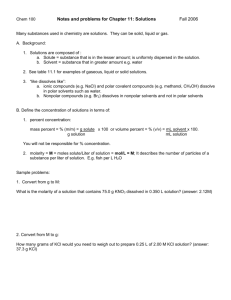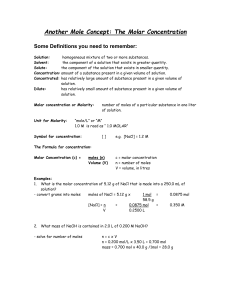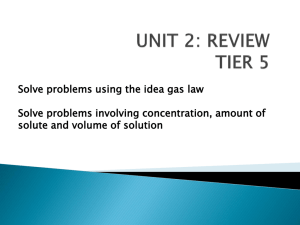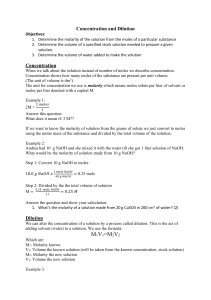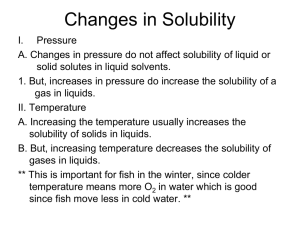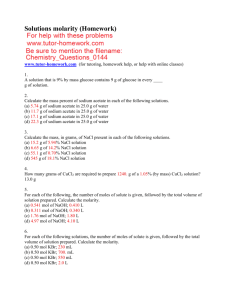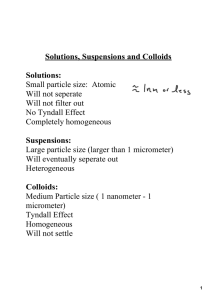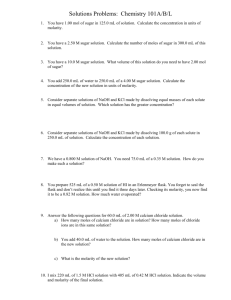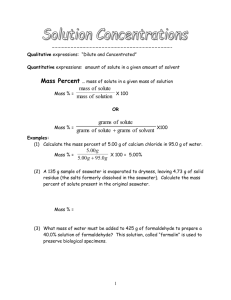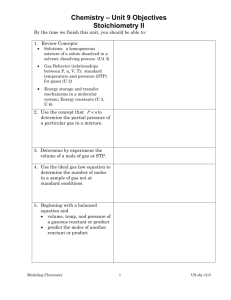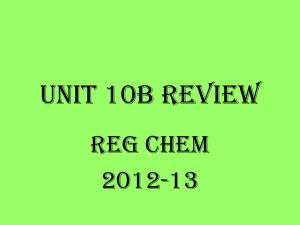Chapter 4 Worksheet
advertisement
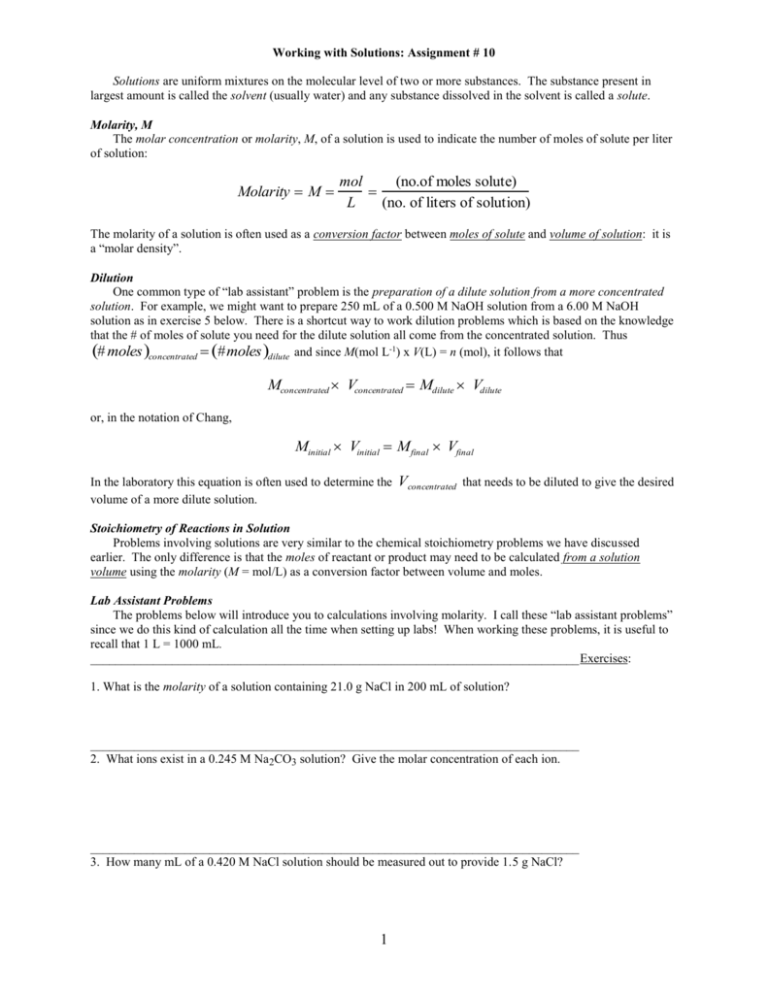
Working with Solutions: Assignment # 10 Solutions are uniform mixtures on the molecular level of two or more substances. The substance present in largest amount is called the solvent (usually water) and any substance dissolved in the solvent is called a solute. Molarity, M The molar concentration or molarity, M, of a solution is used to indicate the number of moles of solute per liter of solution: Molarity M mol (no.of moles solute) L (no. of liters of solution) The molarity of a solution is often used as a conversion factor between moles of solute and volume of solution: it is a “molar density”. Dilution One common type of “lab assistant” problem is the preparation of a dilute solution from a more concentrated solution. For example, we might want to prepare 250 mL of a 0.500 M NaOH solution from a 6.00 M NaOH solution as in exercise 5 below. There is a shortcut way to work dilution problems which is based on the knowledge that the # of moles of solute you need for the dilute solution all come from the concentrated solution. Thus # moles concentrated #moles dilute and since M(mol L-1) x V(L) = n (mol), it follows that Mconcentrated Vconcentrated Mdilute Vdilute or, in the notation of Chang, Minitial Vinitial M final Vfinal In the laboratory this equation is often used to determine the volume of a more dilute solution. Vconcentrated that needs to be diluted to give the desired Stoichiometry of Reactions in Solution Problems involving solutions are very similar to the chemical stoichiometry problems we have discussed earlier. The only difference is that the moles of reactant or product may need to be calculated from a solution volume using the molarity (M = mol/L) as a conversion factor between volume and moles. Lab Assistant Problems The problems below will introduce you to calculations involving molarity. I call these “lab assistant problems” since we do this kind of calculation all the time when setting up labs! When working these problems, it is useful to recall that 1 L = 1000 mL. ______________________________________________________________________________Exercises: 1. What is the molarity of a solution containing 21.0 g NaCl in 200 mL of solution? ______________________________________________________________________________ 2. What ions exist in a 0.245 M Na2CO3 solution? Give the molar concentration of each ion. ______________________________________________________________________________ 3. How many mL of a 0.420 M NaCl solution should be measured out to provide 1.5 g NaCl? 1 Working with Solutions: Assignment # 10 ______________________________________________________________________________ 4. How many grams of CaCl2 are needed to make 200 mL of a 0.500 M Cl- solution? (Note: CaCl2 is a soluble salt. The molar mass of CaCl2 is 110.98 g/mol.) ______________________________________________________________________________ 5. How do you prepare 250 mL of a 0.500 M NaOH solution from a 6.00 M NaOH solution? (hint: MV = MV) 2

